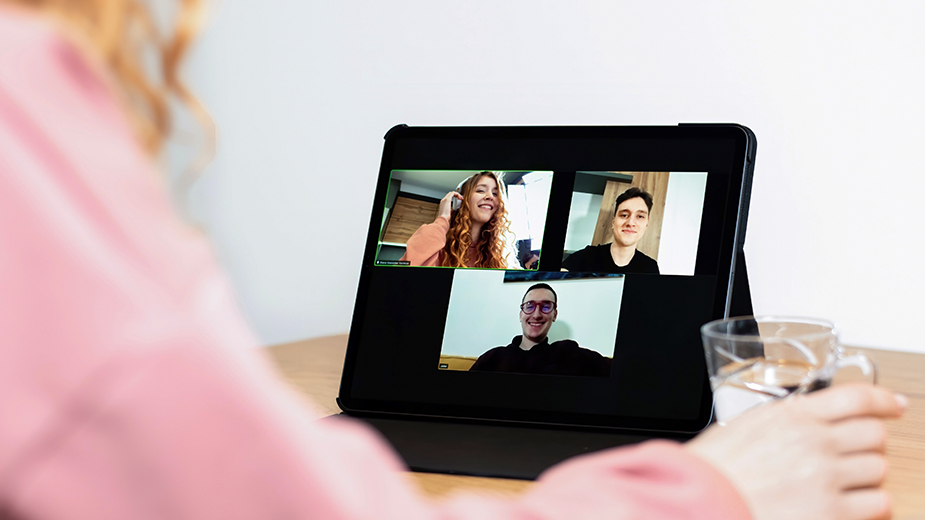YOUNGSTOWN, Ohio – When the coronavirus pandemic swept into the Mahoning Valley last year, those working in addiction recovery scrambled to uphold one of the most important aspects of overcoming addiction: community.
At a time when the recommendation for everyone was to stay apart, recovery centers knew they had to keep their patients together.
It didn’t have to be in person – and in most cases, it wasn’t – but they had to keep those battling addiction in touch with therapists, counselors and each other.
“Anyone in recovery knows – I’m in recovery myself, 21 years – that early on, you need support. You’re totally alone with this disease and you need the support of people face-to-face,” says Tom O’Donnell, a program therapist at Valor Recovery Center, Austintown. “For people with the disease of addiction, it’s how they cope with issues. They turn to their coping skills and don’t have the option to have someone there to talk to.”
Telehealth services were a godsend and are here to stay, local therapists and counselors say. Offering remote counseling and group meetings break down one of the biggest barriers to treatment – transportation – and allow patients to get outpatient treatment on their own schedules.
At Rise Recovery, which has sites in Warren, Liberty Township and Newton Falls, the virtual services will be a permanent addition, says medication-assisted treatment coordinator Stephanie Bardash.
But for Rise patients, the offering comes with conditions.
“We’ve found that giving them structure is more helpful to them. They know they have to do their check-in and drug screening the day before in order to have that telehealth appointment,” she says.
“For a lot of clients, it helps them be accountable. They’re going into a new way of life, So helping them build their structure helps them get to the next steps they need to take.” Bardash says.
For those getting inpatient treatment, telehealth allows recovery clinics to offer care even if patients are exposed to the coronavirus.
Valor built an interior wall and created an isolation ward, says business operations director Audrey Novotny, where residents can continue treatment while they wait for their quarantines to end.
The Austintown center also does its own virus testing swabs, allowing patients to be tested immediately and have results within 24 hours, Novotny says.
While they’re in the ward, patients receive many of the same materials and amenities they would in the rest of the building. The only difference is that they aren’t meeting face-to-face with others.
“People in recovery need structure. They need consistency to stay on track. They need to continue going to groups and seeing their counselor,” Novotny says. “Especially in times like these, it’s so important to stay on track.”
Local recovery centers have generally seen the volume of people seeking treatment increase over the past year.
New Day Recovery clinical director Kate Bacha says there was “naturally an increase” as some with co-occurring mental health diagnoses such as depression and anxiety relapsed early in the pandemic and returned to the clinic.
Numbers stayed steady, she continues, until stimulus checks began to arrive.
“It’s sad to say – but it creates more stability in an addiction,” Bacha says. “If I have my financial needs met – if I have a roof over my head or have the funds I need to pay for my addiction – then I’m more prone to stay in the addiction route because it’s easier and more accessible.”
Likewise, Carolyn Givens saw a dropoff in the number of patients at Neil Kennedy Recovery Centers in January.
While the Youngstown treatment center has traditionally been about a 50-50 split between men and women, that number has tilted dramatically toward being male-dominated since the start of the year.
“I have four recovery houses, two dedicated to females, and one of them is totally empty. I don’t know where they’ve gone,” the executive director of the Neil Kennedy Recovery Centers says. “Are they at home because their kids can’t be in school? I don’t know. It’s a statewide phenomenon.”
At Valor, O’Donnell says the pandemic has taken a tremendous toll on those in recovery, because “people come in here broken more often than they have in my 18 years doing this.
“We see that frustration among the general population and addicts are going to reach for the thing they know works, even if it kills them,” he says.
The substances people abuse have also shifted, some observe. Neil Kennedy’s
Givens says alcohol, opiates and cocaine remain the most commonly abused among the patients at the center, while Rise Recovery’s Bardash has seen a shift from heroin to stimulants and fentanyl.
“The supply changed, likely because of changes at the border that made it harder to get in – everything was being stopped and checked,” Bardash says. “A lot of times, it’s about whatever the supplier has.”
